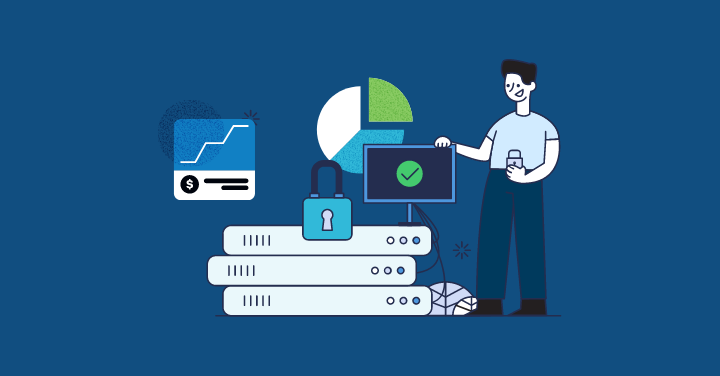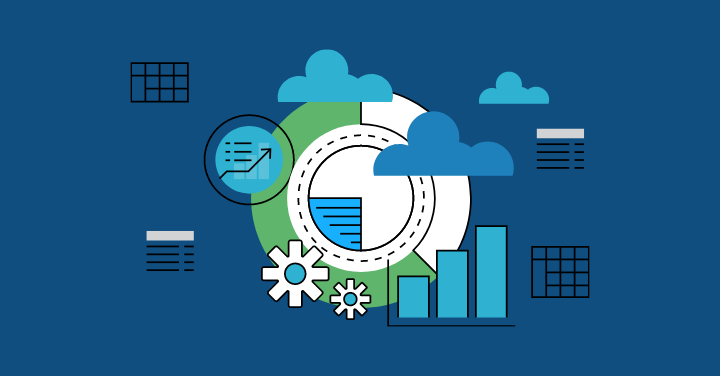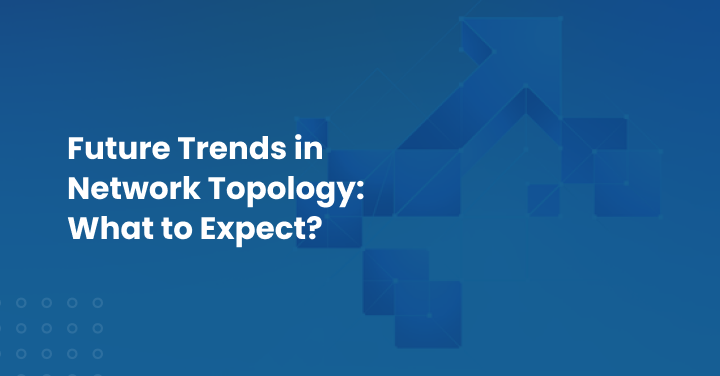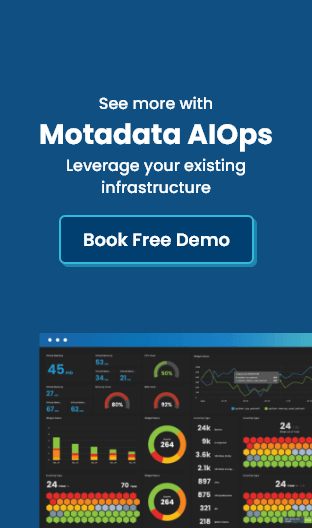Over the years, the Chief Information Officer (CIO) role has transformed from operational overseer to strategic architect.
Today, the CIO’s role is no longer only limited to maintaining IT systems but also empowering organizations to innovate, grow, and thrive in an era defined by digital change.
Every business model or digital service is underpinned by one foundational element: the network. Still, many businesses and experts consider network performance, reliability, and security to be just technical tasks.
However, the truth is that CIOs can make the most of the insights provided by this foundational layer and achieve business goals. But exactly how?
Modern network monitoring software for CIOs comes with infinite features rather than basic alerting.
These comprehensive network monitoring tools enable CIOs, IT managers, or IT Directors to analyze large network datasets and generate insights into security risks, trends, network availability, virtual machines, performance bottlenecks, and the entire IT infrastructure. Thus, they enable CIOs to meet their core business goals effectively.
Let’s explore network monitoring software and its key features and capabilities. Further, we will discuss how network intelligence can directly support and accelerate a CIO’s strategic initiatives.
Mapping Network Intelligence to CIO Strategic Pillars
Digital transformation initiatives demand a strong network foundation for faster transmission, security, and good connectivity. Network Intelligence helps organizations better understand their networks’ performance and overcome challenges.
For CIOs, it can be a powerful tool to help drive business success and improve IT strategy.
Ensuring Business Resilience & Mitigating Risk
This pillar focuses on maintaining uninterrupted business operations, security risk management, and reducing disruptions. The CIO’s business objective is to guarantee that services are consistently available.
Here is how network monitoring plays a key role in achieving this pillar:
- Predictive Failure Analysis: AI-driven network monitoring solutions can spot real-time anomalies and other issues responsible for system failure. This predictive insight allows IT teams to identify the problem long before it impacts the system’s performance, thus preventing outages and reducing unplanned downtime.
- Accelerated Incident Resolution (MTTR): Even a minor issue in the network system can cause disruption. However, with the right network monitoring tool in practice, IT experts can figure out the root cause of the problem faster and visualize dependencies across systems. Thus resolving incidents quickly and reducing Mean Time to Resolution (MTTR).
- Quantifying Risk Exposure: It even acts as a risk assessment tool, helping identify single points of failure and weak spots that could impact business functions or critical services. This tool enables the CIO and team members to understand and address potential risks.
- Supporting Disaster Recovery/Business Continuity Planning: Unexpected events or a serious system failure can happen at any time and undermine customer trust. Network monitoring provides information about how the network normally performs (baseline data) and helps test whether the backup network systems are ready to take over if needed. Thus, it ensures that critical systems remain operational in case of mishap.
Enabling Digital Transformation & Agility
This pillar emphasizes driving innovation and supporting the adoption of new technologies to facilitate new business models. It focuses on properly deploying digital technologies like cloud computing, IoT, and AI to enhance the organization’s agility.
Here is how you can achieve this goal with network maps and application performance monitoring tools:
- Informed Capacity Planning: It is important to know if your existing network infrastructure can support or handle extra load in case of adoption of new technology or increased network usage. The monitoring tool provides insights into this essential data, showing current usage and areas needing upgrades. Thus, it allows CIOs to predict traffic flow, make informed decisions about network investment, and prevent congestion.
- Validating Cloud Migration Success: Moving data from on-premises systems to cloud environments is not simple. You must monitor network behavior before, during, and after cloud migrations for a seamless transition and better user experience. With the network monitoring tool in practice, the CIO can track every step of the way and ensure data integrity.
- Assessing New Application Impact: The deployment of new applications can affect network bandwidth and latency. Without clear visibility, these deployments risk degrading performance, resulting in poor user experience. With network monitoring tools, CIOs can track how each new application interacts with the existing infrastructure and provide insight on bandwidth consumption and performance bottlenecks.
- Faster Time-to-Market: Customers often appreciate businesses that launch new digital services or applications faster. Any network-related delay caused by misconfiguration or capacity issues can impact critical initiatives. One can prevent it by investing in an advanced network monitoring tool that provides real-time visibility into network performance. By identifying and addressing potential issues early, IT teams can accelerate the deployment timeline and deliver quality results without compromising user experience.
Optimizing IT Spend & Demonstrating Value
This pillar concerns the wise management of IT budgets and resource usage. It focuses on showing how IT investments benefit the company’s bottom line.
- Resource Optimization: One of the best methods to manage your IT budget is to monitor your assets and eliminate underutilized ones. The CIO needs to ensure that IT spending is wise and that the company gets the most out of its IT investments. In this case, the monitoring software provides insights into the usage of bandwidth, ports, and network hardware resources. By identifying underperforming resources, CIOs can strategize and save costs. Optimized resource utilization reduces capital expenses and minimizes the need for reactive purchases or unnecessary upgrades.
- Reducing Operational Costs: Prolonged troubleshooting, emergency repairs, and penalties from missed service level agreements (SLAs) are costly. Proactive network monitoring can cut down these costs, as it allows users to discover problems before they impact performance or escalate into a major issue. By shortening the mean time to detect (MTTD) and mean time to resolve (MTTR), CIOs can reduce downtime and lower incident management costs, guaranteeing smoother operations and eliminating unused resources.
- Data-Driven Investment Decisions: Making network investment decisions without solid data can cause issues in the future, leading to over-provisioning or under-provisioning of resources. With network monitoring, you gain access to key performance metrics that justify technology investments. Whether upgrading bandwidth, investing in new security solutions, or scaling infrastructure, decisions are made based on the data collected from these tools that showcase stress points, future capacity needs, and ROI. Adapting this approach will eventually build stronger businesses and secure investments for necessary upgrades.
- Chargeback/Showback: IT departments in some organizations are charged for IT resources they use (chargeback/showback model). The monitoring tools in such a case enable CIOs to track resource consumption by each department or application. This detailed insight into network consumption promotes fairness in budget allocation and highlights areas that drive maximum demand for network usage. Thus promoting accountability and easing the process of understanding resource usage.
Enhancing Security Posture & Ensuring Compliance
This pillar goes beyond protection from minor breaches. Cybercrime is rising, and protecting company’s data and systems from potential threats is a paramount concern.
This pillar focuses on the proper deployment of digital technologies and the implementation of broader legal frameworks.
Here is how network monitoring plays a key role in protecting digital assets and maintaining compliance.
- Threat Detection: Modern cyber threats often enter through weak spots or loopholes in the network. A network security monitoring tool can act like a security guard that updates on anomalies in real time. The tool can continuously analyze traffic patterns to identify suspicious data flows, malware activities, and other anomalies. Further, early detection of any unusual behavior enables CIOs to deploy defensive systems faster and reduce breaches and damage to business operations.
- Security Incident Response: When security incidents occur, time is critical. Network monitoring provides invaluable context during investigations by delivering detailed logs, flow data, and performance metrics related to the event. This forensic information helps IT and security teams quickly pinpoint the source and scope of breaches. Thus enabling faster recovery. With comprehensive network data, CIOs can reduce investigation timelines and strengthen their organization’s incident response capabilities.
- Compliance Auditing: Meeting regulatory requirements such as PCI-DSS, HIPAA, or GDPR demands detailed and accurate records of network activities. This software allows CIOs to automatically collect and archive performance data. Further, permitting them to access logs and system activities is essential for compliance audits. With these records in hand, the audit process will not only simplify but further reduce the risk of non-compliance penalties.
- Validating Security Controls: Firewalls, VPNs, intrusion prevention systems, and other security controls are critical to safeguarding an organization’s digital environment. However, simply deploying these tools is not enough—they must be continuously validated to ensure they function correctly. Network monitoring software tests and tracks the performance of these defense systems over time, confirming their effectiveness and detecting any weaknesses. CIOs can maintain a robust security posture by regularly validating security controls and quickly adapting to emerging threats.
Strategic Capabilities: What CIOs Should Demand from Network Monitoring
As CIOs increasingly take on strategic roles within their organizations, they must demand more from their network monitoring solutions than fundamental operational insight.
One can choose from the several popular tools available in the market, including Paessler PRTG Network Monitor, ManageEngine OpManager, Motadata, etc.
Investing in these network monitoring tools can be highly advantageous for business resilience, growth, and innovation. They must deliver intelligence that connects technical performance to business outcomes.
Here are the strategic capabilities modern CIOs should expect from their network monitoring platforms.
- Unified & Contextual Visibility: Monitoring environment and cloud service providers have become more complex with traditional tools since the advancement of new technologies. Whether you want to monitor on-premises, cloud infrastructure, or hybrid infrastructures, you require advanced monitoring tool capabilities. The network device monitoring tool is one of the trusted and popular tools for better network visibility into all environments. It also helps correlate network data with application and infrastructure health to reveal a complete picture. This holistic view breaks down traditional IT silos and enables faster, more informed decision-making. By adopting an Artificial Intelligence for IT Operations approach, large organizations, CIOs, and IT leaders can monitor and identify isolated issues early.
- AI-Powered Predictive Insights: Traditional network monitoring is mainly reactive, i.e., generally alerts only after a problem arises. Businesses cannot let it happen today as it can cause downtime and affect user experience. Modern CIOs need solutions that leverage AI and machine learning to predict potential issues before they impact the business. Forecasting capacity needs, predictive data analysis, and identifying degradation patterns allow organizations to address risks proactively. This capability is essential for risk mitigation, as it prevents minor network irregularities from snowballing into major service disruptions and further enables businesses to prepare for new technologies without compromising performance.
- Business Service Impact Analysis: Businesses can face minor to significant network issues anytime. None of the problems are equal in network management. A minor slowdown on an internal communication tool differs from an outage affecting a customer-facing application. Effective network monitoring must provide clear visibility into how network health directly impacts specific business services and processes. Business Service Impact Analysis enables CIOs to prioritize issues based on their business significance, ensuring that IT resources are focused on what matters most. It also strengthens communication between IT and executive leadership, as it translates technical incidents and helps articulate risks and find resolutions.
- Scalability for Growth: With businesses adopting more and more digital services, their networks inevitably grow in size, complexity, and data volume. A network monitor must be built to scale seamlessly. It must accommodate the growing demands of the network environment without impacting performance. Scalability ensures that CIOs can support new initiatives—such as IoT adoption, cloud migrations, and remote workforce expansions. A scalable network monitoring tool will add more visibility and control as the business evolves, ensuring agility and operational resilience.
- Actionable Reporting for Leadership: Technical data alone is insufficient when making smart business decisions or communicating with non-technical stakeholders. CIOs need network monitoring solutions that showcase performance issues, traffic status, and application performance of the entire network in an easy-to-understand manner. It must be capable of translating complex metrics into actionable insights. Customizable dashboards and reports should detail key indicators such as risk exposure, performance trends, and cost-saving opportunities. Thus enabling CIOs to demonstrate the value of IT to the business.
Motadata Unified Observability Platform: Aligning Network Intelligence with CIO Strategy
Platforms like Motadata Unified Observability Platform built with deep learning frameworks for IT operations are a perfect fit for the evolving strategic needs of today’s CIOs.
By offering a unified platform that brings together network monitoring, infrastructure visibility, and AI-driven analytics, Motadata Unified Observability Platform transforms raw data into meaningful intelligence.
Rather than just providing traditional monitoring capabilities, the tool offers predictive insights that enable faster detection of potential issues before they impact business operations.
By adopting this proactive approach, businesses will reduce downtime and strengthen their overall business resilience.
Motadata further helps map network health directly to business applications, which allows CIOs to gain more clarity into the operational impacts of network performance on critical services.
The platform further provides comprehensive visibility into cloud services and visualizes the dependency between different components.
Thus, eliminating silos and guaranteeing faster resolution. AI-powered analytics also offers more profound insights into trends and anomalies.
If you are focused on demonstrating IT’s strategic value, investing in Motadata’s actionable dashboard and reporting tool will make it easier to show the relationship between network health, business performance, and ROI.
Whether supporting digital transformation initiatives, improving the security posture, or optimizing IT costs, Motadata Unified Observability Platform delivers the intelligence required to align IT operations with high-level business goals.
Thus, this enables CIOs to move network monitoring from a tactical necessity to a strategic asset that supports growth and innovation.
Download a free trial version and later upgrade to the enterprise edition to unlock more features.
Conclusion: Transforming Network Monitoring from Tactical Tool to Strategic Enabler
Network monitoring for CIOs is not only about uptime and alerts but has also become a powerful source of strategic intelligence.
Cost control, security, and business resilience are essential for any successful business. Hence, having precise and real-time insights into the network is highly crucial.
Today’s modern network monitoring software has advanced features and capabilities that help deliver valuable data to CIOs, resulting in intelligent decision-making and reduced risks.
By leveraging monitoring tool capabilities, CIOs can directly support key business objectives. Predictive analytics can help reduce costly downtime, whereas visibility into capacity and performance guarantees smoother adoption of new technologies, fueling innovation and agility.
More insights on network usage, traffic analysis, bandwidth monitoring, packet loss, response time, and other aspects can help improve overall efficiency. Similarly, enhanced security monitoring protects critical assets and compliance maintenance.
The right network performance monitor equips CIOs with the intelligence to align technology with business strategy and risk management.
To make the most of these network performance monitoring tools, CIOs should adopt an approach that goes beyond basic functionality and provides a clear view of the entire network infrastructure.
Further, the best network monitoring tool focuses on outcomes that matter to the business.
Download “The CIO’s Framework for Evaluating Monitoring ROI” for a deeper framework to guide your evaluation and unlock strategic network intelligence.







